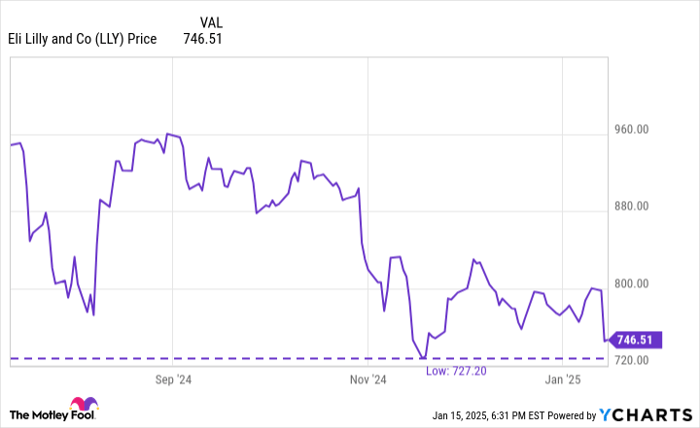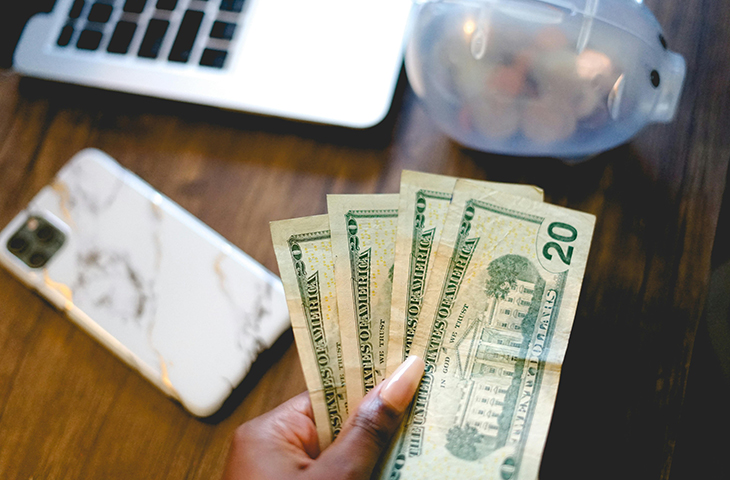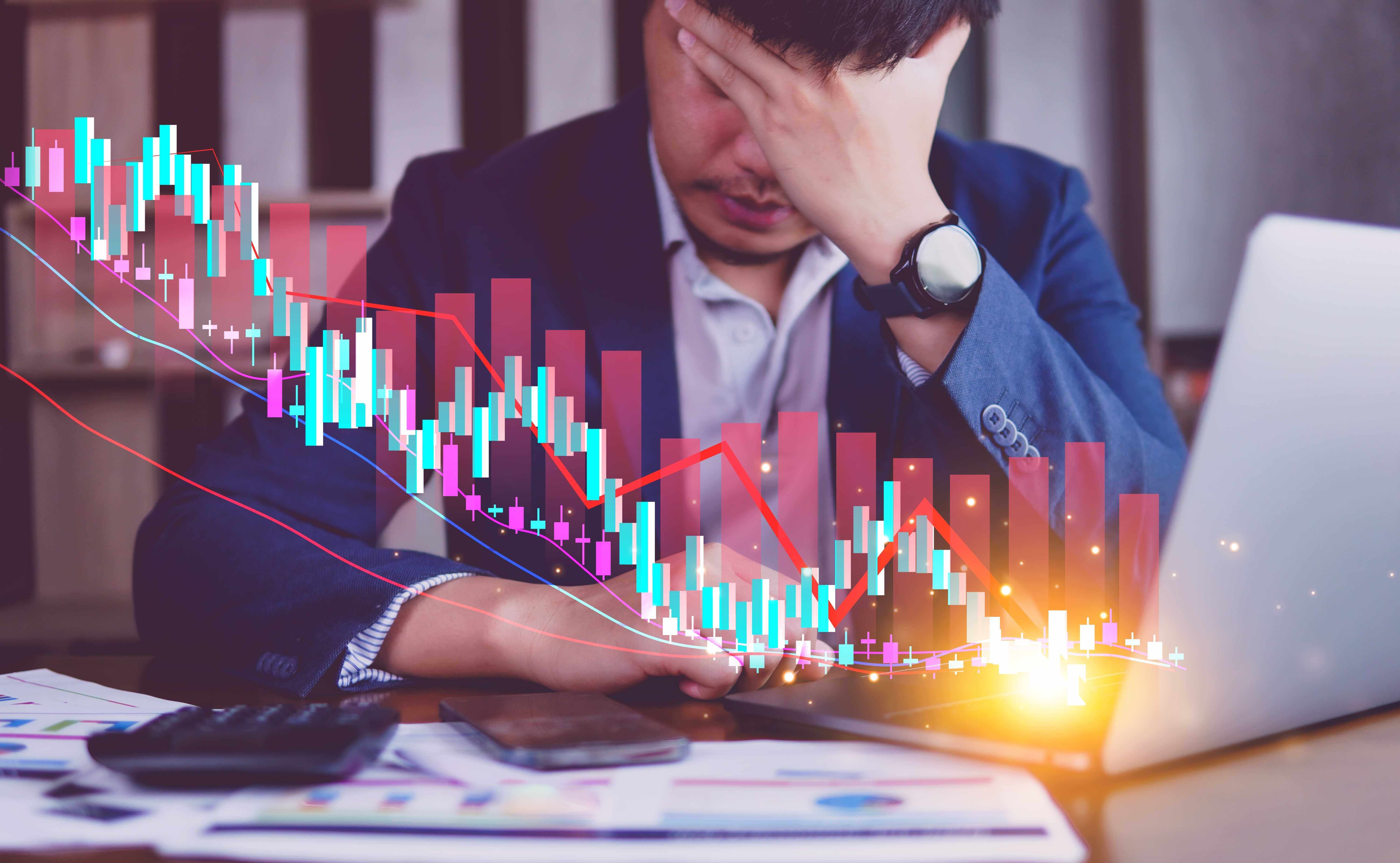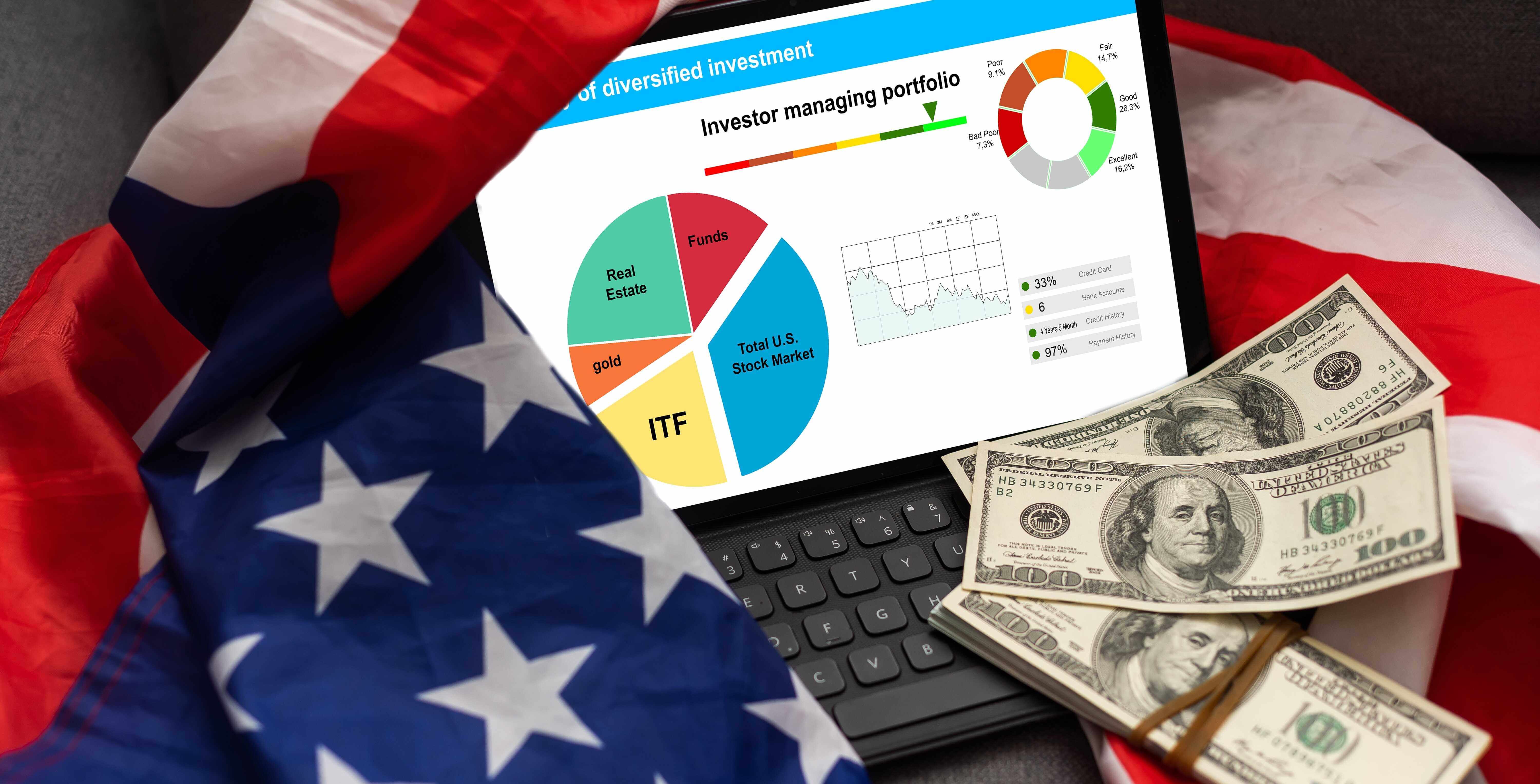Should You Buy The Dip In Eli Lilly Stock Right Now?

2024 was an interesting year for pharmaceutical powerhouse Eli Lilly (NYSE: LLY). At one point, share prices had gained as much as 65% on the year. However, after a less-than-spectacular earnings report published in late October, shares of Lilly started to slide considerably.
All told, Lilly stock still gained 33% in 2024, outperforming the S&P 500 and Nasdaq Composite. Unfortunately, Lilly investors haven't had much to celebrate so far in 2025. On Jan. 14, shares of Lilly dropped by as much as 8% and ended the day down around 6%. Year-to-date, share prices are down about 1.4%.
Where to invest $1,000 right now? Our analyst team just revealed what they believe are the 10 best stocks to buy right now. See the 10 stocks »
Below, I'm going to dive into what caused Lilly's stock to drop earlier this week and assess if the current price action is a good opportunity to buy the dip.
What caused Eli Lilly's stock to fall this week?
During an earnings report, management will generally provide investors with a forecast for the next quarter and potentially the full year. This is a process known as financial guidance. Guidance is important because it ultimately serves as a way for investors to hold management accountable should the financial picture and operating results start to get off track.
Back in October, Lilly reported earnings for the third quarter. During this report, management provided revenue guidance for the full year 2024 in the range of $45.4 billion to $46 billion. This was nominally below management's prior guidance range -- which signaled total sales of $46.6 billion at the high end.
On Jan. 14, Lilly surprised investors with another revision to its full-year guidance. Per the company's press release, Lilly now expects to generate $45 billion in sales for 2024 -- a decrease from the lower range of its prior forecast.
Naturally, this was unwelcome news, and investors punished Lilly by selling off its stock.
Image Source: Getty Images
How big of a deal is this guidance miss?
I don't mean to overgeneralize, but companies miss guidance all of the time. Missing guidance in and of itself is not a reason to panic. What's more important is why a business is not performing at the level it thought it would. Once those details are uncovered, it becomes much easier to assess whether a company indeed has problems or if it's simply experiencing a temporary bump in the road.
As for Eli Lilly's situation at the moment, it's important to remember that the company is still on pace to grow annual revenue by 32%. As an investor in Lilly myself, I can't turn my back on a company growing at this pace.
I think what really caused the recent sell-off was Lilly's specific guidance related to its blockbuster GLP-1 drugs, Mounjaro and Zepbound. For the fourth quarter, Lilly calls for revenue of $3.5 billion for Mounjaro and $1.9 billion for Zepbound.
Considering that these two treatments are Lilly's biggest tailwinds, it's easy to connect the dots between the company's lower sales estimate and the acceleration at which Mounjaro and Zepbound are moving.
But here's the subtle idea I think most investors are overlooking. Despite these lower-than-expected sales figures, Lilly is still expected to generate record revenue from both of its weight loss treatments in the fourth quarter, signaling that demand is still in a great spot overall.
Should you buy the dip in Eli Lilly right now?
As of market close on Jan. 15, Lilly stock is hovering near its lowest level in about six months.
Considering that management is still calling for another year of 32% revenue growth in 2025, I'm hard-pressed to explain why investors are panic-selling the stock. To me, Lilly remains one of the most rock-solid investment opportunities in the pharmaceutical arena.
Beyond weight loss, the company has a flourishing oncology business, and some medications approved to treat Alzheimer's Disease and eczema have yet to even reach scale. In my eyes, now is a fantastic opportunity to take advantage of Lilly's depressed price action and buy the stock hand over fist.
Don’t miss this second chance at a potentially lucrative opportunity
Ever feel like you missed the boat in buying the most successful stocks? Then you’ll want to hear this.
On rare occasions, our expert team of analysts issues a “Double Down” stock recommendation for companies that they think are about to pop. If you’re worried you’ve already missed your chance to invest, now is the best time to buy before it’s too late. And the numbers speak for themselves:
- Nvidia: if you invested $1,000 when we doubled down in 2009, you’d have $357,084!*
- Apple: if you invested $1,000 when we doubled down in 2008, you’d have $43,554!*
- Netflix: if you invested $1,000 when we doubled down in 2004, you’d have $462,766!*
Right now, we’re issuing “Double Down” alerts for three incredible companies, and there may not be another chance like this anytime soon.
*Stock Advisor returns as of January 13, 2025
Adam Spatacco has positions in Eli Lilly. The Motley Fool has no position in any of the stocks mentioned. The Motley Fool has a disclosure policy.



